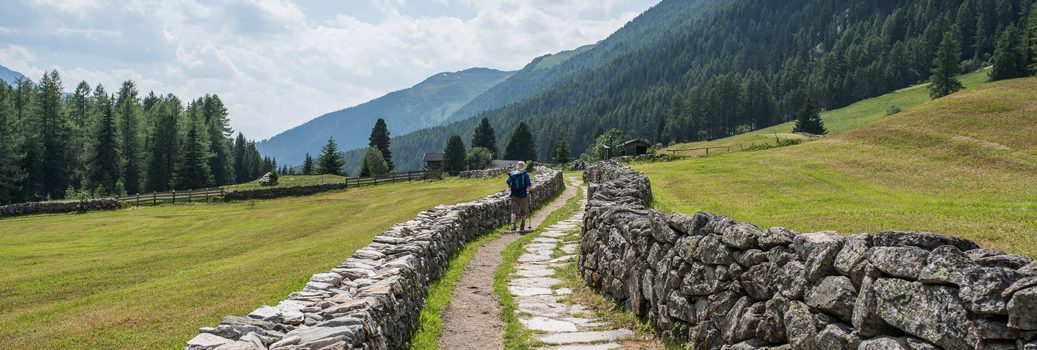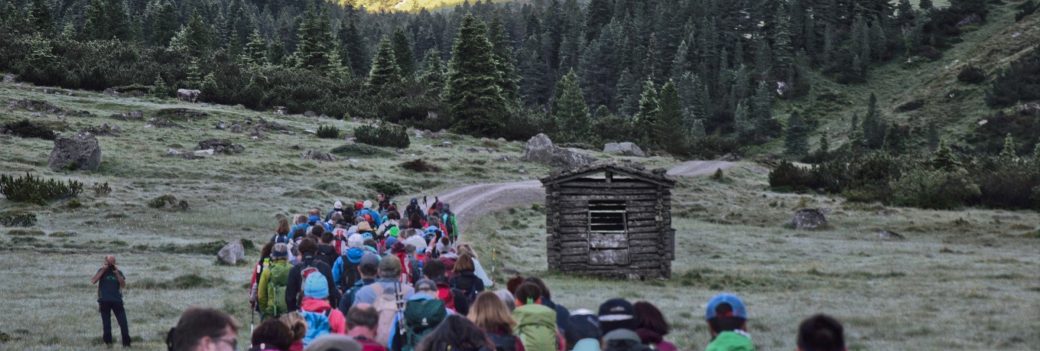2021 marks the 15th anniversary of the Alpine Peace Crossing commemorations. A good occasion, then, to take a look back at the past.
An introduction to this year’s focus by Robert Obermair and Bettina Reiter. Translated by Hilde Mayer.
In many cases, personal experiences form the basis for remembrance and commemoration. They make the past tangible and possible to experience. That is why our focus this year is on life stories. In doing so, we want to make the events of 1947 accessible on a new personal level, while at the same time taking a closer look at the potentials and difficulties of personal memories. For our focus we have decided on a combination of theoretical approaches to the topic of memories and actual personal (family) memories, especially of the flight of 1947.
Complexity, opportunities and challenges of memories
The introductory contribution by Victoria Kumar vividly underlines how important memories of survivors of National Socialism are for both commemorative culture and educational work. Margit Reiter’s analysis makes clear that personal memories can play a central role not only in the case of victims of the Nazi regime but also in the family memory of descendants of National Socialists. In the following text, Hanna Frischenschlager shows this in a very prudent way using the example of her grandfather and the family’s handling of the topic. Many former National Socialists had to deal with the topic – if at all – only in a family context. The memories of survivors of Nazi terror could play an important role in the legal reappraisal of Nazi crimes, as is evident in Lukas Nievoll’s review of the trial of Franz Murer – even if the post-war judiciary tended toward scandalous verdicts.
In history classes eyewitness accounts are a widespread means of introducing students to the topic of National Socialism. In her article, Adelheid Schreilechner explains what is essential for the successful use of eyewitnesses apart from intensive preparation and follow-up. Maria Ecker-Angerer then uses a personal article on her own family memory to show how incomplete or selective family memories can be and poses the legitimate question of why.
Marianne Windsperger focuses on the representation of survivors of the Shoah in literature. In the context of the discussion about the end of living eyewitnesses, she makes clear that reflections on witnessing and conveying what happened already began with the first literary discussions about the Shoah and are by no means a new phenomenon. The following article also focuses on the literary reappraisal of the past: In an interview with our board member Antonia Winsauer, the writer Robert Kleindienst reports on the challenge of using historical material in literature, using the example of his novel Zeit der Häutung.
Memories of the Flight in 1947
The focus concludes with five very personal recollections of the Jewish exodus after 1945. In order to preserve the authenticity of these recollections, we have decided to retain the original language of the texts for these five contributions. Thus, we accompany brothers Adam and Miles Protter on a search for clues into the mysterious past of their father, who, as part of the Bricha, was instrumental in organizing the Jewish migration from post-war Europe. Rami Litani’s story follows a similar theme, as his father was an officer in the Jewish Brigade, an army unit of Jewish volunteers who not only participated in the fight against the Nazis but also helped Jews fleeing Europe after 1945. The contribution of Miri Nehari – head of the Bricha Association, an organization that has made it its goal to document and pass on the legacy of the Bricha – makes clear how important the memory of the historic flight is for the self-image of many Israelis today.
Hanna Weiss tells the story of her family, which took the arduous journey to what was then Palestine after the Second World War. She herself was born in a Displaced Persons Camp in Germany before being carried over the Krimmler Tauern by her parents a few months later. But with this strenuous trek, the escape was far from complete. Several more long months passed before they arrived in Palestine.
In her very personal article, Gal Talit explains not only the important role her mother played as part of the Bricha in the escape over the Krimmler Tauern and in the Displaced Persons Camp in Saalfelden but also the importance of these places and the perpetuation of memories for her family history and herself.
With this issue of the Alpendistel we would like to provide an insight into the complexity of memories. On the one hand, they are valuable sources that can give a better picture of a past time, but on the other hand, it must always be questioned what storytellers want to achieve with their stories and which aspects may have been left out or even forgotten.
We are particularly pleased that some people responded to our call last year and shared their personal or traditional memories of the flight in 1947 with us and that we can make them accessible to a wider audience.
Information on the authors: Robert Obermair is a contemporary historian at the University of Salzburg and chairman of the board of APC. Bettina Reiter teaches English and physical education and is a board member of APC.








